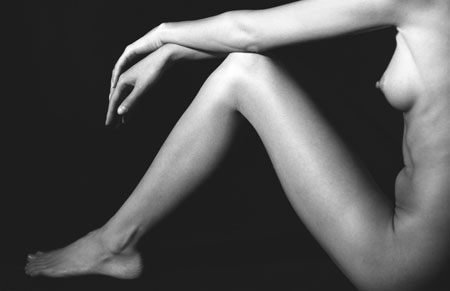
The human geometry approach to photographing the naked figure reduces the subject to a series of curving outlines and strong angular shapes. The aim is to produce simple graphic images that focus on the structure of the body. The face can be excluded from the frame to focus attention on the figure, or partly concealed to suggest shyness. Position the figure so that light falls from above and behind the body, producing highlights that emphasize natural shapes and structural geometry. Dense shadows can be partially filled or used to frame and isolate shapes and natural angles. It is also possible to emphasize shape by casting graphic shadows onto the floor or background.
Images of this type can be photographed in a studio, where precise and complete control of lighting is possible, or in directional natural light. Domestic environments need to be handled with great care, as furnishings and other details inevitably add personal touches to the images. The result may then be rather too voyeuristic and lose focus on geometric aspects. Backgrounds should provide tonal or colour contrast, and avoid any element of pattern or detail that might distract. Coarse fabrics introduce a textural contrast for the smooth skin of a model. Monochromatic images consisting of flesh tones, tans and warm browns have particular impact and appeal.






